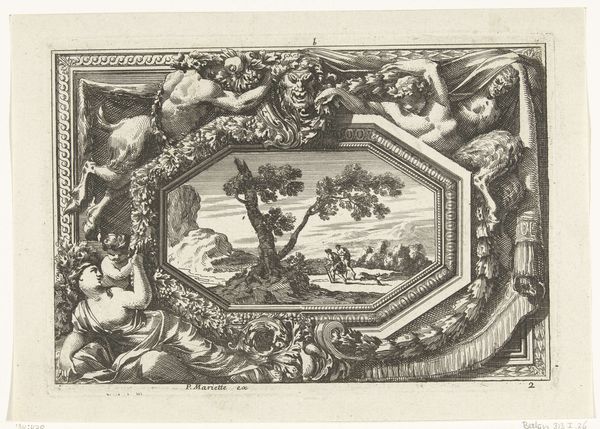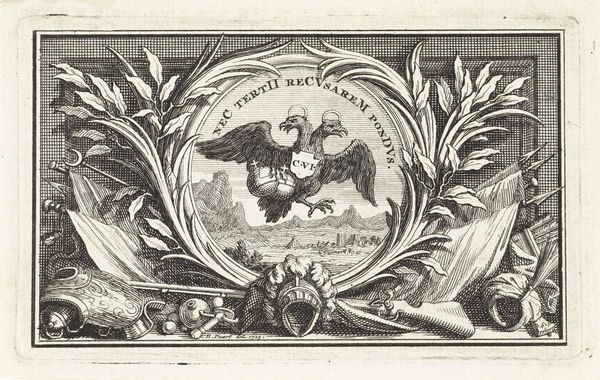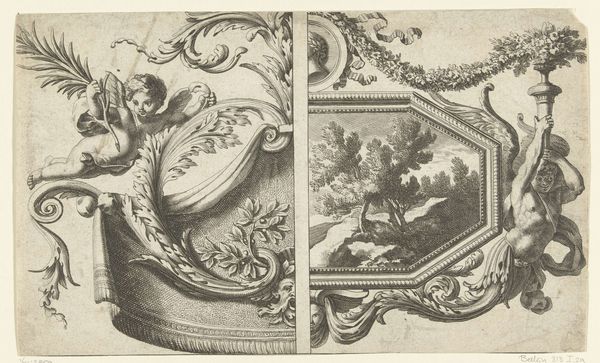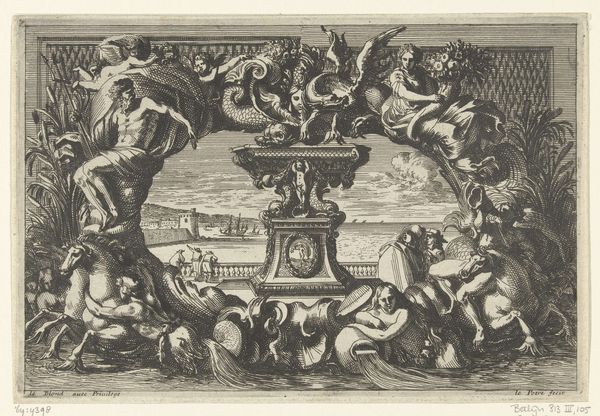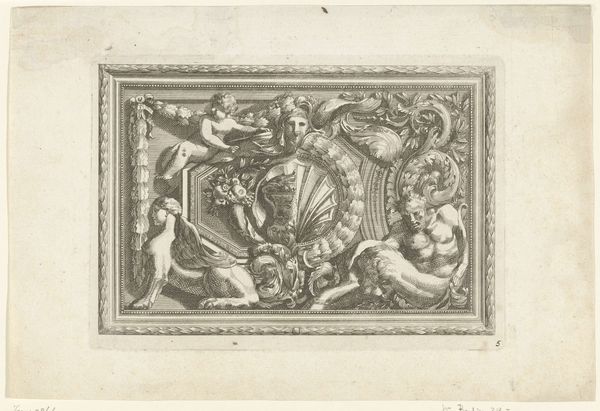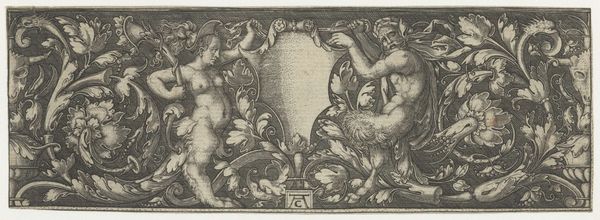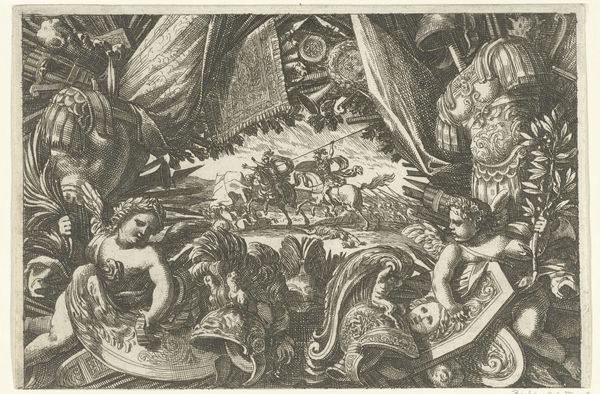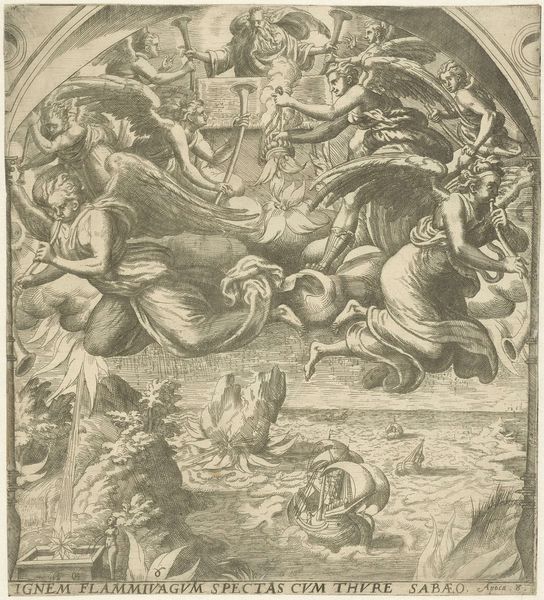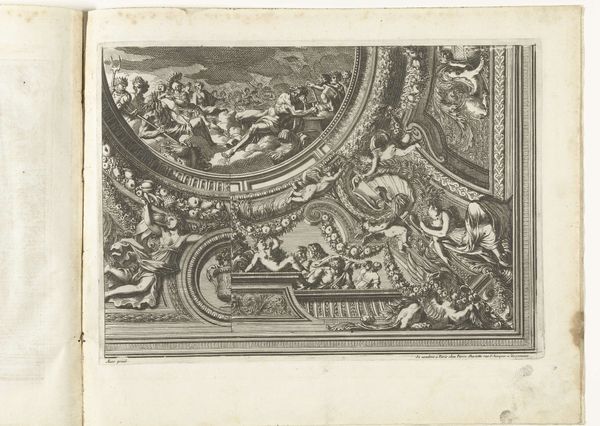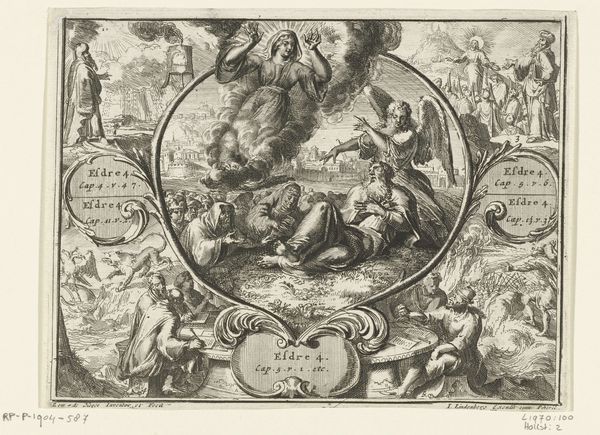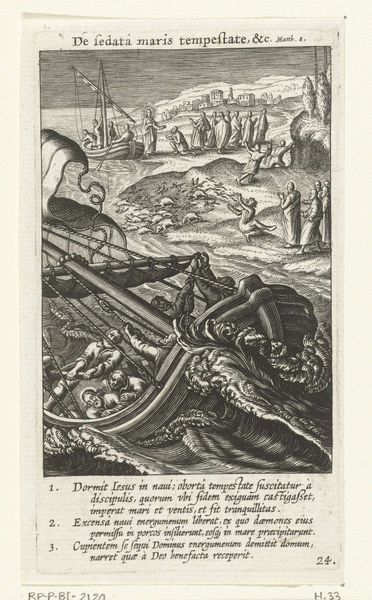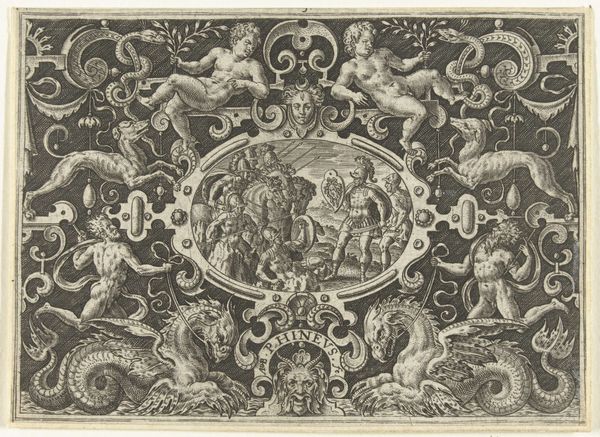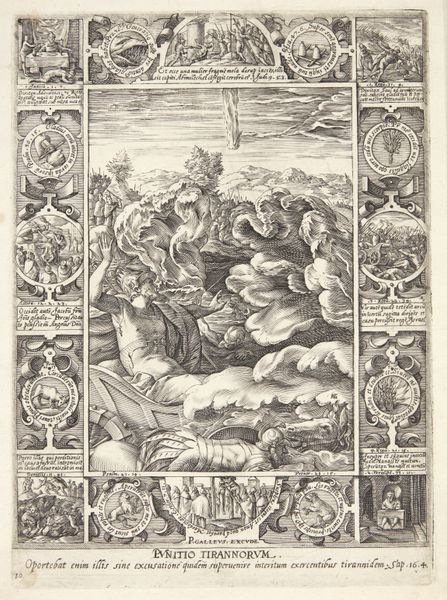
print, etching, engraving
#
ink drawing
#
allegory
#
baroque
#
pen drawing
# print
#
etching
#
landscape
#
figuration
#
form
#
line
#
history-painting
#
engraving
Dimensions: height 146 mm, width 220 mm
Copyright: Rijks Museum: Open Domain
Curator: This engraving, titled "Zoutvat in cartouche", which translates to "Salt Cellar in Cartouche", was created before 1667 by Jean Lepautre. It resides here in the Rijksmuseum. What strikes you first about this print? Editor: It’s remarkably busy. An elaborate frame, possibly a salt cellar perched atop something…It’s dense and the lines, despite being on a relatively small scale, are incredibly forceful. I wonder how the texture feels. Curator: Well, it’s print, made using etching and engraving techniques, which allowed for precisely those detailed lines that catch your eye. Think about what a salt cellar represented: preservation, flavor, even status. How does that interact with the surrounding imagery? Editor: Yes, the container itself is a statement! But let's break down the composition, starting with the base, where these mournful figures rest, flanking a powerful lion…all of it anchored firmly. And then it's offset above with dynamic energy as winged figures blow celebratory horns atop a floral crown…Such a theatrical setting for common dining salt. Curator: The entire arrangement could act as an allegory for peace and prosperity. The military campaign unfolding behind is subtly present—you see the active front, the smoke, the buildings? The placement of the salt cellar front and center hints that it's a symbolic treasure to be protected by military prowess. Editor: True. The figures embody that struggle, as well. I'm still intrigued by the salt cellar itself. It is held up, quite literally, by cherubic figures…It acts almost like a stage for its simple shape, this visual focus surrounded by so much conflict. Curator: That’s insightful. Think of this elaborate structure less as pure decoration and more as a framework to amplify meaning. Lepautre masterfully combines decorative elements with symbolic figures to highlight something more profound than simple ornamentation. The memory of struggle protects common bounty. Editor: It feels opulent yet somehow precarious. This reminds us how even the most ordinary items once carried layers of social, political, and spiritual weight. The line-work also deserves study in person… Curator: Precisely. It challenges us to consider that the images of our past hold deeper symbolic ties to our present world.
Comments
No comments
Be the first to comment and join the conversation on the ultimate creative platform.
